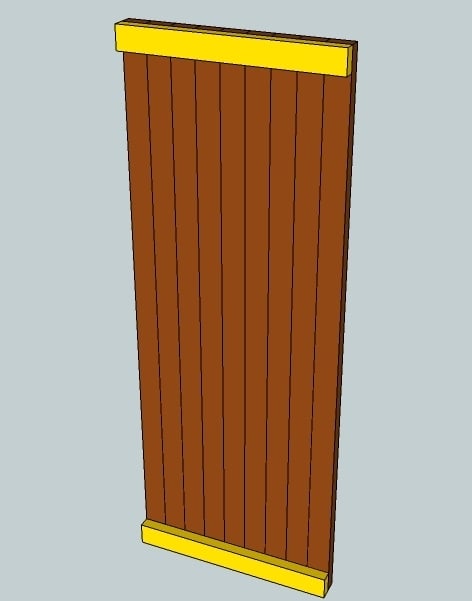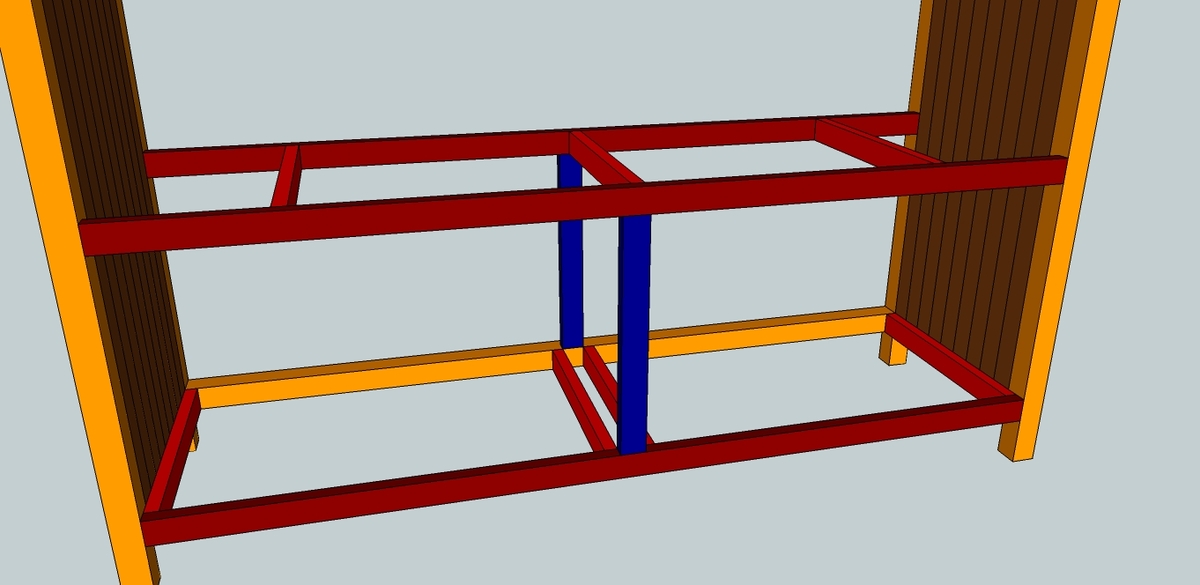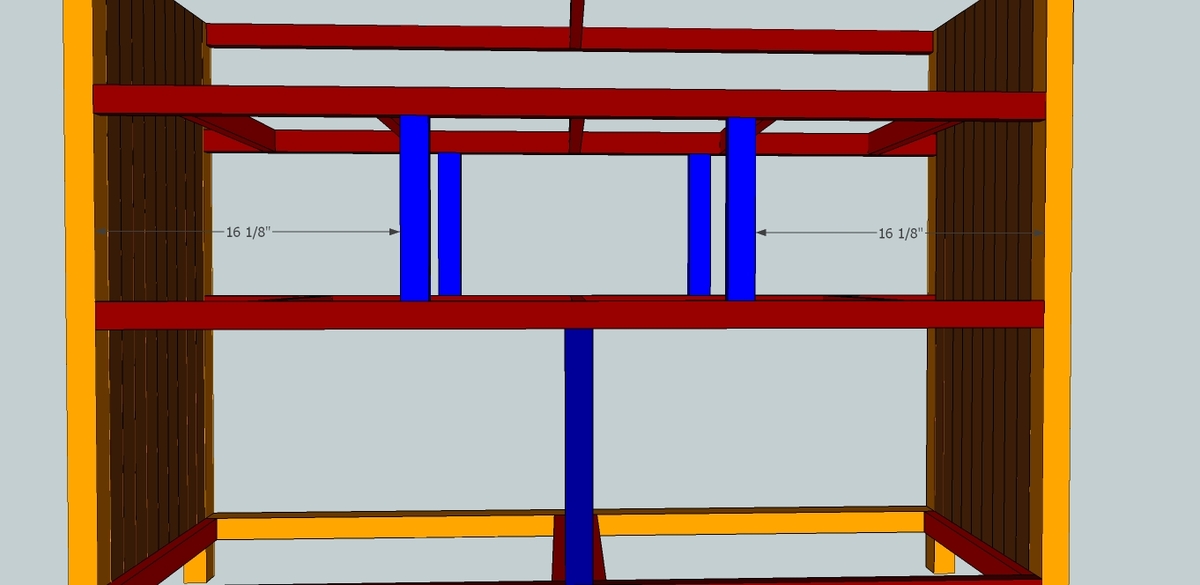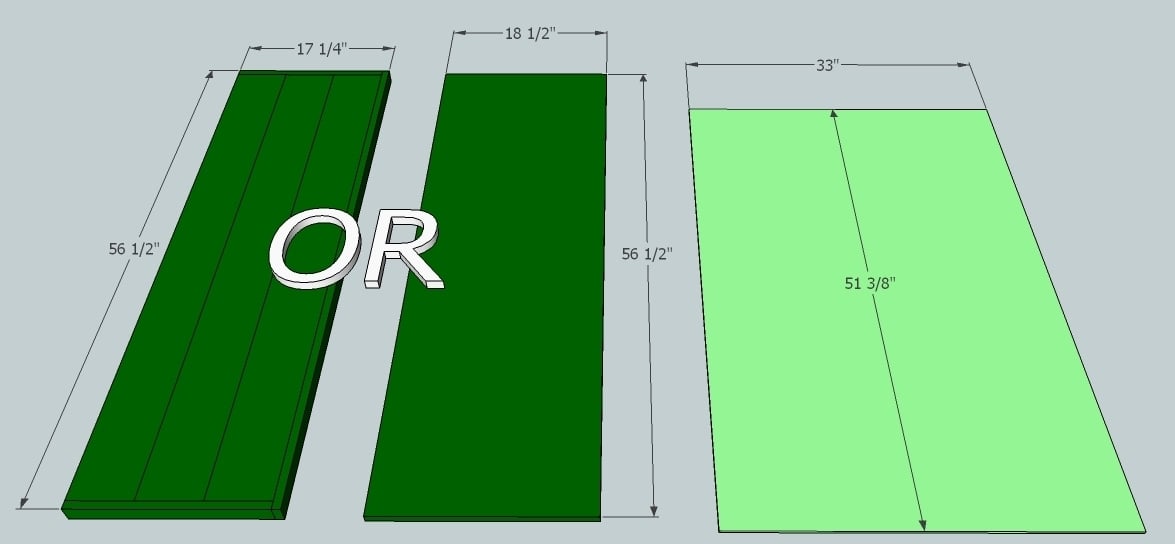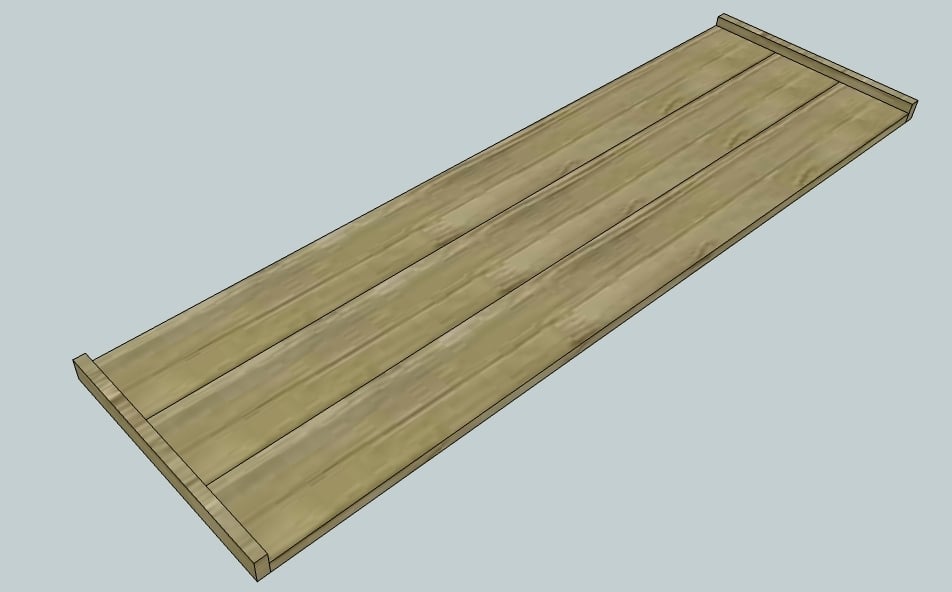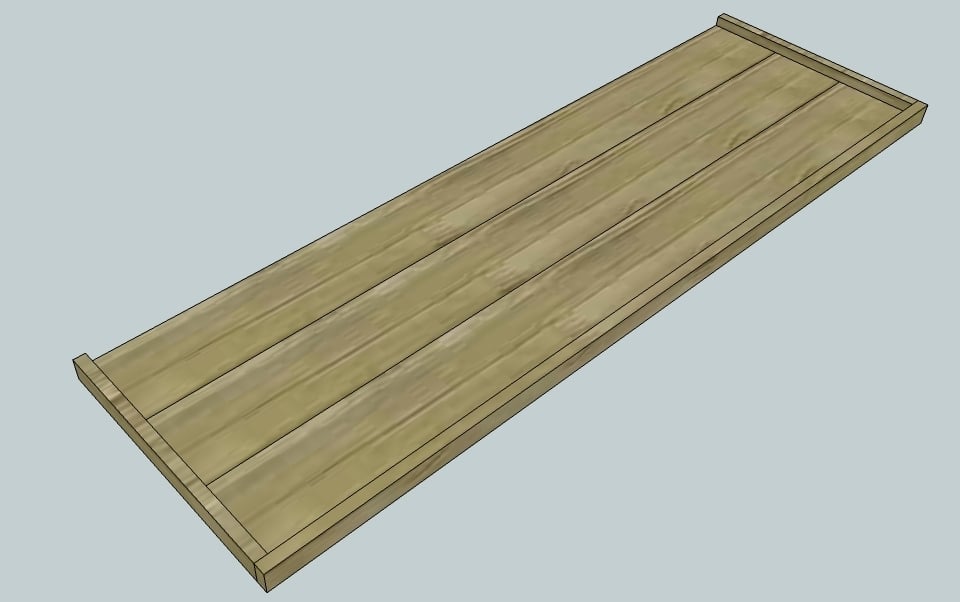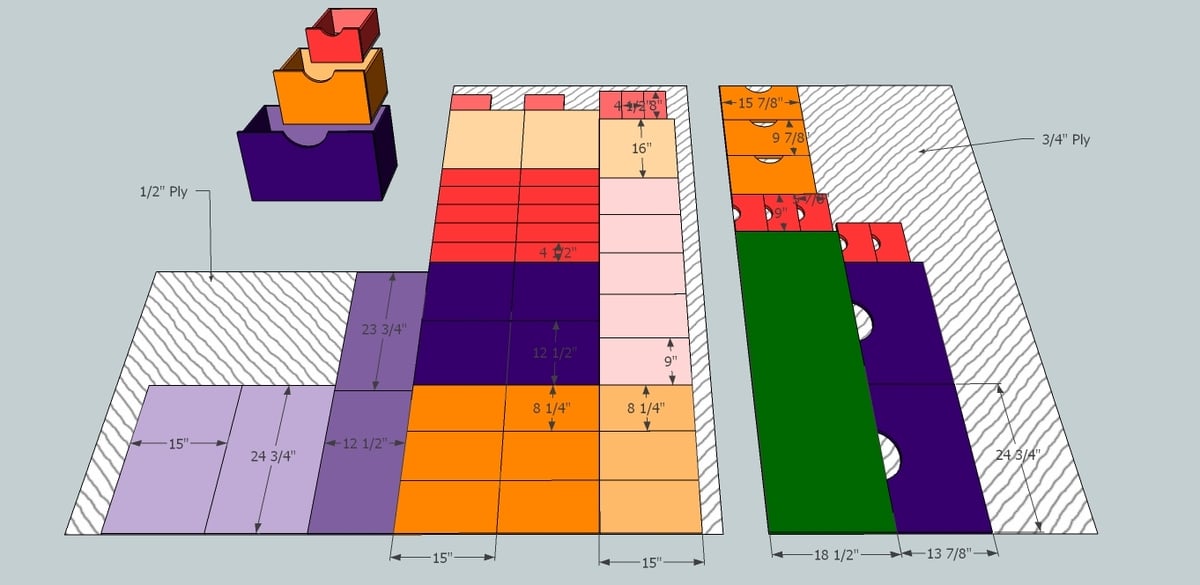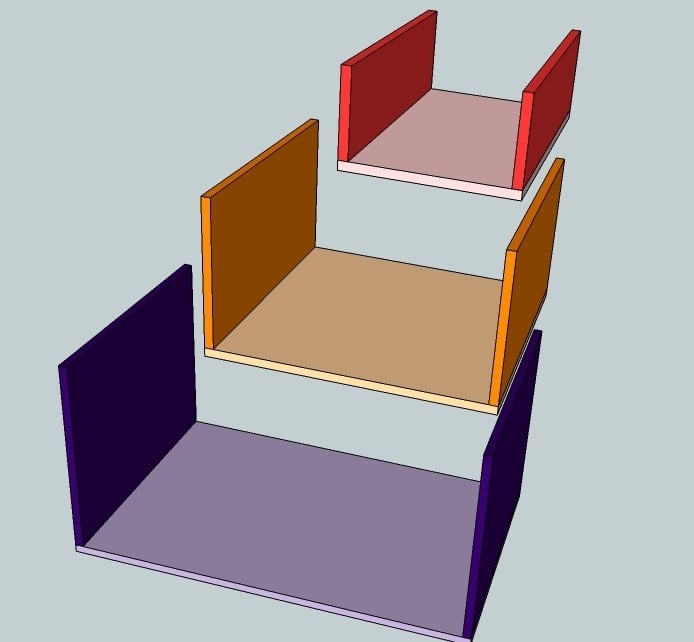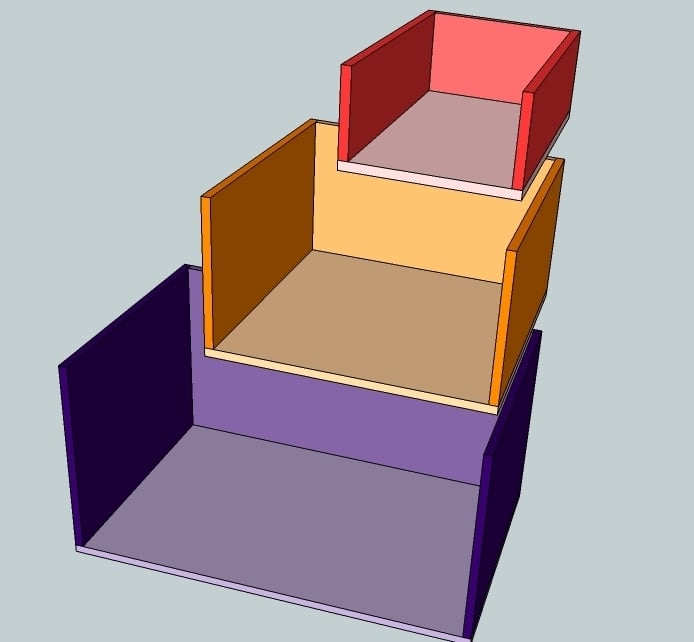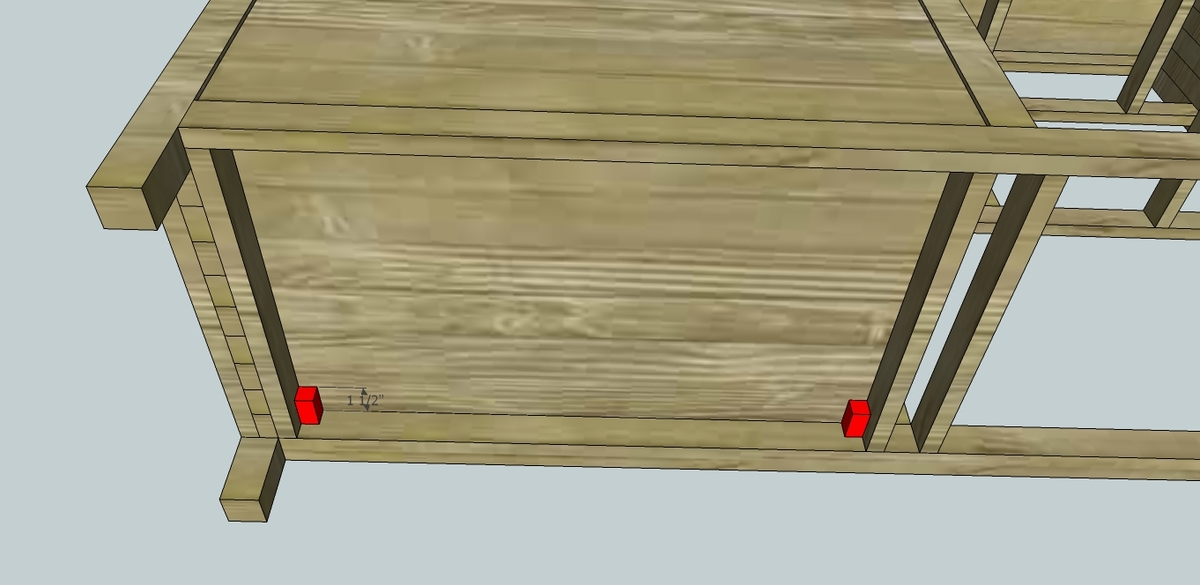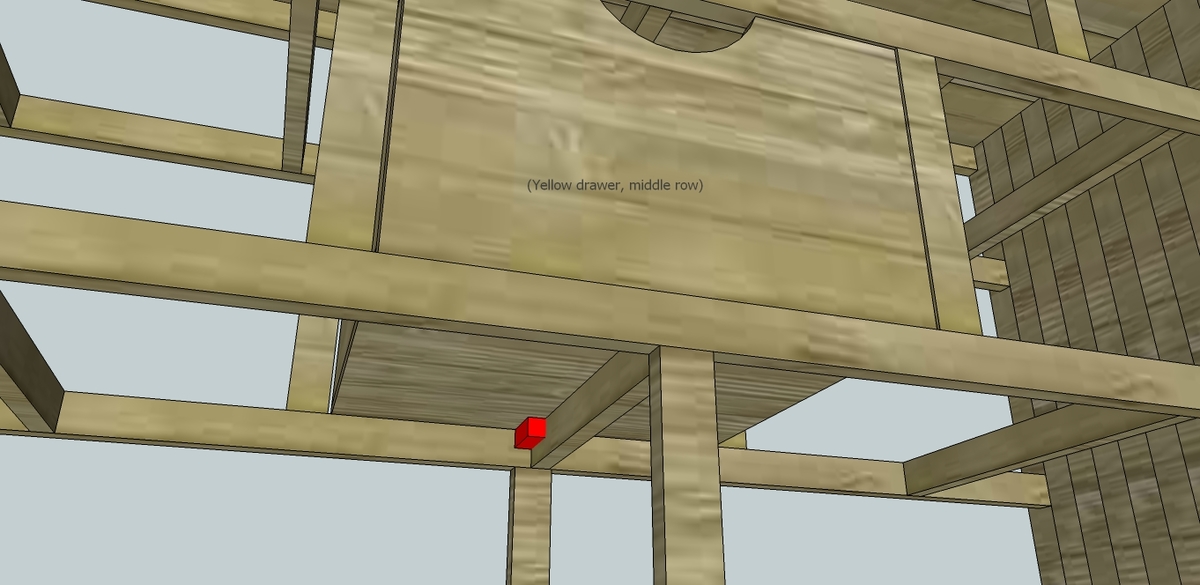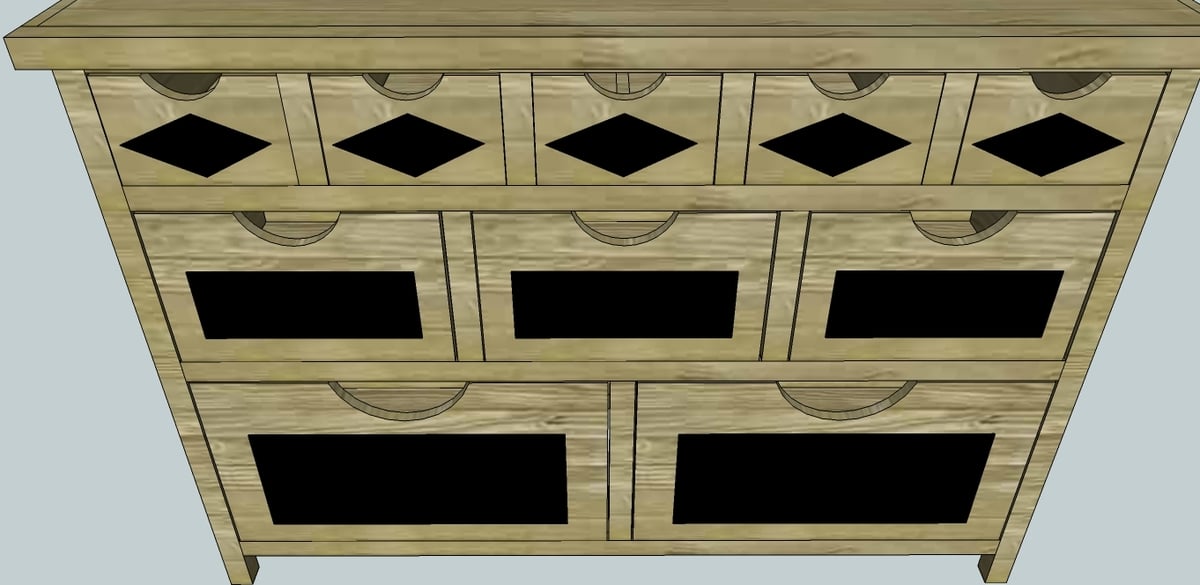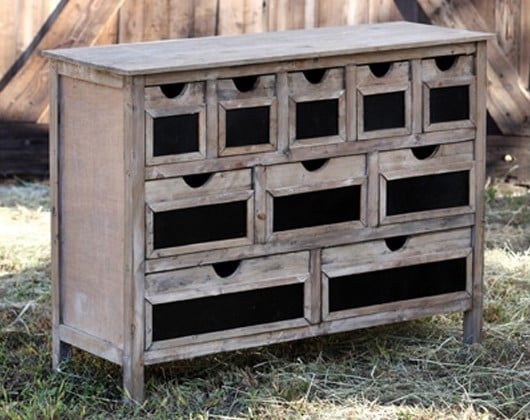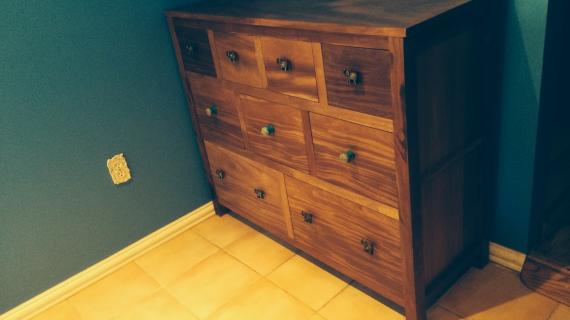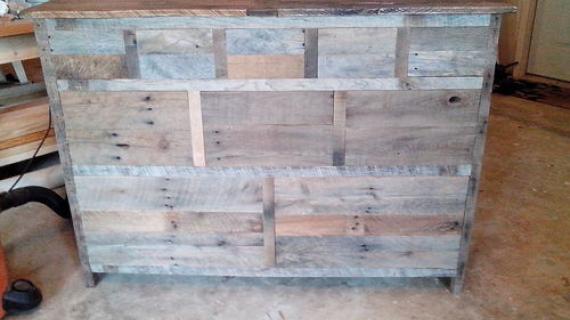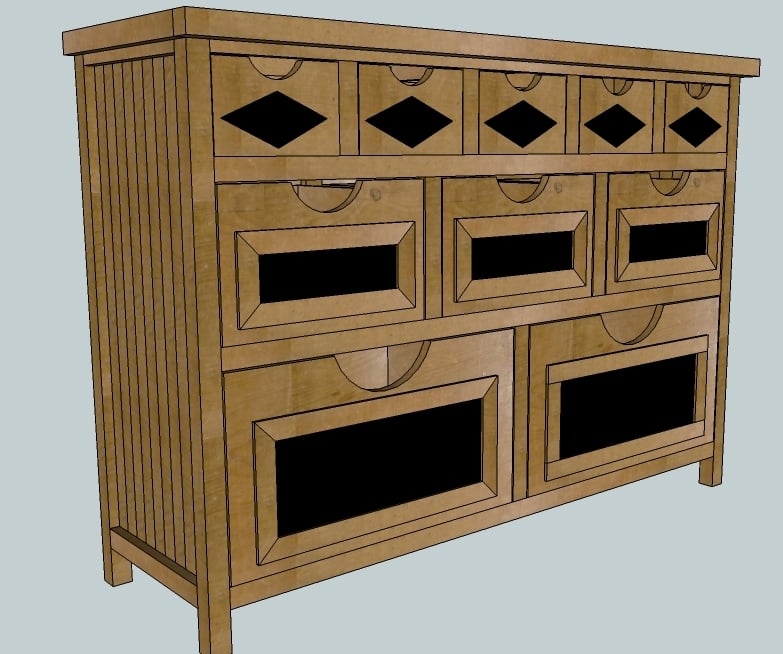
Build a handsome, rustic storage dresser! Free plans.
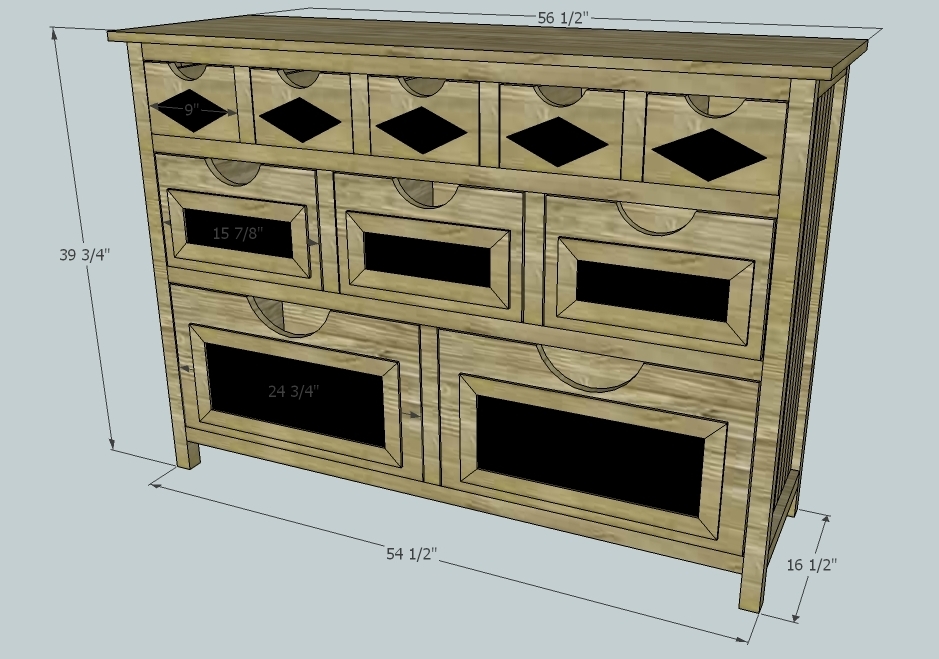
Preparation
3 2x2@8'
17 1x2@8'
3 1x6@6' (optional fancy top)
1 sheet 3/4" ply
2 sheets 1/2" ply (you'll have a LOT left over)
1 sheet 1/4" ply (optional for back)
18 linear feet of pine lattice moulding (optional) - or 2 sticks @10' (plus nails, if using)
Chalkboard paint (or chalk paint like ASCP)
Painter's tape
Finish of choice
See pics in steps 1, 2, and 18
Carcass
4 2x2 @ 39" (orange legs)
1 2x2 @ 51 1/2" (orange back bottom stretcher)
7 1x2 @ 51 1/2" (dark red stretchers...or are they aprons?)
13 1x2@ 14 1/4" (bright red stretchers)
18 1x2@ 36" (brown side panels edge glued, but you could also use ply, panels, or other boards)
4 1x2 @ 13 1/2" (gold side trim pieces)
2 1x2 @ 14" (dark blue vertical spacers)
4 1x2 @ 10" (mid-blue vertical spacers)
6 1x2 @ 6" (light blue vertical spacers)
1 1/4" ply at 33" x 51 3/8" (back, optional)
Top
EITHER 3/4" ply at 56 1/2" x 18 1/2"
OR
(3) 1x6 @ 55"
(1) 1x2 @ 56 1/2"
(2) 1x2 @ 16 1/2"
Bottom Drawers (Do NOT cut until carcass has been assembled and measurements checked)
Faces - (2) 3/4" ply at 13 7/8" x 24 3/4"
Sides - (4) 1/2" ply at 12 1/2" x 15"
Backs - (2) 1/2" ply at 12 1/2" x 23 3/4"
Bottoms - (2) 1/2" ply at 15" x 24 3/4"
Middle Drawers
Faces - (3) 3/4" ply at 15 7/8" x 9 7/8"
Sides - (6) 1/2" ply at 8 1/4" x 15"
Backs - (3) 1/2" ply at 8 1/4" x 15"
Bottoms - (3) 1/2" ply at 16" x 15"
Top Drawers
Faces - (5) 3/4" ply at 9" x 5 7/8"
Sides - (10) 1/2" ply at 4 1/2" x 15"
Backs - (5) 1/2" ply at 4 1/2" x 8"
Bottoms - (5) 1/2" ply at 9" x 15"
Framing of chalkboards is optional; see last step.
Cut and assemble the carcass before cutting pieces for the drawers...you will want them to fit exactly, so base your drawer dimensions on the final measurements of the openings you build in the carcass. Also, you may choose to use up scrap on the drawers...double check that the thicknesses you choose are the same as the plan, or else modify the plan to accommodate a change in thickness.
See steps 1, 2, and 18.
Please read through the entire plan and all comments before beginning this project. It is also advisable to review the Getting Started Section. Take all necessary precautions to build safely and smartly. Work on a clean level surface, free of imperfections or debris. Always use straight boards. Check for square after each step. Always predrill holes before attaching with screws. Use glue with finish nails for a stronger hold. Wipe excess glue off bare wood for stained projects, as dried glue will not take stain. Be safe, have fun, and ask for help if you need it. Good luck!
Instructions
Step 2
Step 3
Step 4
Step 6
Step 7
Step 9
Step 11
Step 12
Step 13
Step 14
...the spacing gets wonky. In a miniscule sense. Do your best to space them out pleasingly.
THIS is why you must not cut drawers before the dresser is assembled! (You haven't, have you?) Take your measurements from the finished cubby before you begin cutting drawer faces. Remember you will want 1/8" gap (or close to it) on each side.
Step 15
Step 16
Step 17
Step 18
NOW we can cut the drawer pieces (did you double check the actual cubby measurements?). Rip one sheet of 1/2" ply into two 15" strips and one 18". You may gang cut a lot of this, just be very careful to make your cuts square and precise. Use up some scrap, if you can. If you like, make the two large drawers out of 3/4" ply and eliminate that second half-sheet of 1/2".
Use a router or jig saw to cut the arcs in the face pieces. They do not all have to match each other, but the ones across a row should match as closely as possible. But! This is rustic and primitive, right? So imperfection will just add a little character!
Step 19
Step 21
Step 22
Now here's something I'd like to try. Instead of regular drawer slides, take two 1 1/2" pieces of scrap...from the underside of the well-positioned drawer, attach your scrap with glue and screw or nail as shown. This acts as a primitive drawer guide, keeping it straight as it slides in and out. It will also stop the drawer from sliding out too far and falling on the floor.
An alternative would be to attach a piece of 2x2 between the two vertical spacers to guide the drawer along its side.
Step 23
Step 24
Step 25
Step 26
It is always recommended to apply a test coat on a hidden area or scrap piece to ensure color evenness and adhesion. Use primer or wood conditioner as needed.















